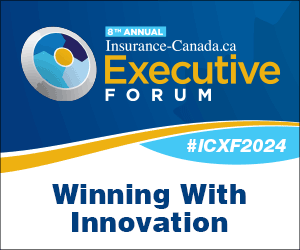Autonomous vehicles are coming to roads near you. There are lots of discussions, but recently I saw that Travelers – a major insurer in the US and Canada – had published Insuring Autonomy: How auto insurance can adapt to changing risks. Rather than taking a whole new approach for autonomous vehicles (AV), Travelers offers methods to alter the the challenges of AVs.
Knowledge is power
Travelers’ white paper notes that “the auto insurance industry should – and will – play a critical role, as lawmakers, regulators, and society understand the new AV world.“ Travelers believes that a clear understanding will lead to a reduction in accidents, injuries, and lost lives.
That being said, there are known unknowns. The authors ask:
“How long will it take to transition from our current state to a fully AV world? How long will it take to fully realize the anticipated benefits of AVs? What unintended consequences and disruptions will arise during the long transition?”
Travelers believes that existing commercial and personal insurance is the most logical method for coverage, whether it be existing driver vehicles or up-and-coming autonomous vehicles.
Are we ready yet?
The Society of Automotive Engineers (SAE) has defined and published six levels of vehicle automation. Here is a short form.
In Level Zero, the driver of the vehicle has to control all of the Dynamic Driving Tasks (DDT). My first car was a 1968 Volkswagen. Nothing more to say.
At the top end, Level Five is “the sustained and unconditional performance by an automated driving system (ADS) of the entire Dynamic Driving Task … without any expectation that a user will respond to a request to intervene.” (More details on Levels 1- 5 can be found at CNET Road / Show).
Suppliers and Consumers see autonomy in their future
While there are no legally operating, individual, fully autonomous vehicles in the US, the self driving car era is entrenched now, in spite of accidents during tests. Travelers noted that 54% of consumers were ‘very open’ to riding in an Autonomous Vehicle (AV) and 52% said they would consider buying one.
The challenge here is that with an autonomous vehicle, the driver is not easily responsible for accidents, since s/he is not directing the vehicle.
Given the changes in risk, will there be changes in coverage?
We have seen the future … and it is us.
Travelers did the counting, and as of June 2018:
- “29 states and the District of Columbia have already passed some form of AV legislation.”
- “Ten other states have executive orders in place regarding AVs.”
-
Furthermore, Travelers estimates that “Audi, BMW, Ford, GM, VW, Volvo, Tesla, Uber, Lyft, Google and Apple will participate in the AV ecosystem in some fashion.” This demands changes in risk.
How do we bring this together?
According to Travelers “Leveraging the current auto insurance structure as the primary risk transfer mechanism in a new AV world allows for speed, fairness and efficiency from the consumer’s perspective.“
Travelers posits that the existing structure can be modified to take AV into account. This would allow new forms of risk to “send pricing signals vis-à-vis premium differentiation among covered autos to encourage AV technological improvements.”
But what happens in a mixed vehicle-control environment? It seems that there will be a dichotomy for the time AV and non-AV are on the road together. Travelers suggests that an AV liability system should be evaluated on its ability to achieve the best balance of three objectives:
- Provide full and timely compensation for victims – Injured parties should be made whole without delay.
- Efficient claim resolution – Minimize expensive and protracted liability determinations for most accidents.
- Encourage adoption of AVs and increased safety of AVs – A liability system should, through its pricing of risk, encourage the AV industry to achieve safer outcomes as insurers have done for decades through the Insurance Institute for Highway Safety and other efforts.
What do you think?
There will be a mixed environment, but utilization of the existing insurance product combined with careful introduction of fully level 5 could be the best chance.



